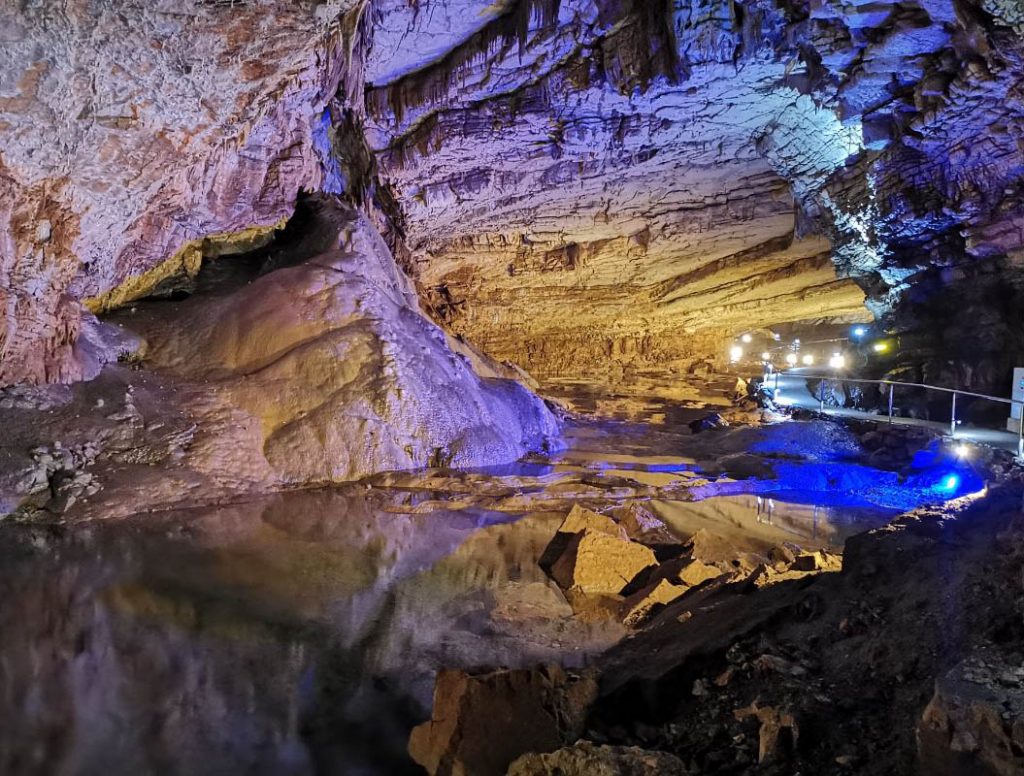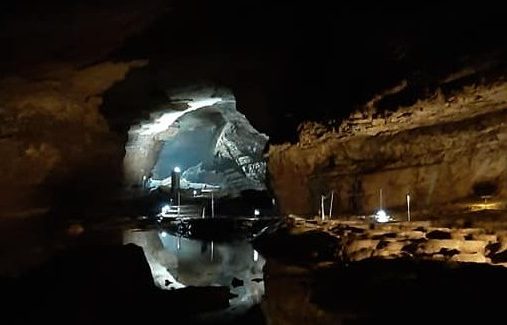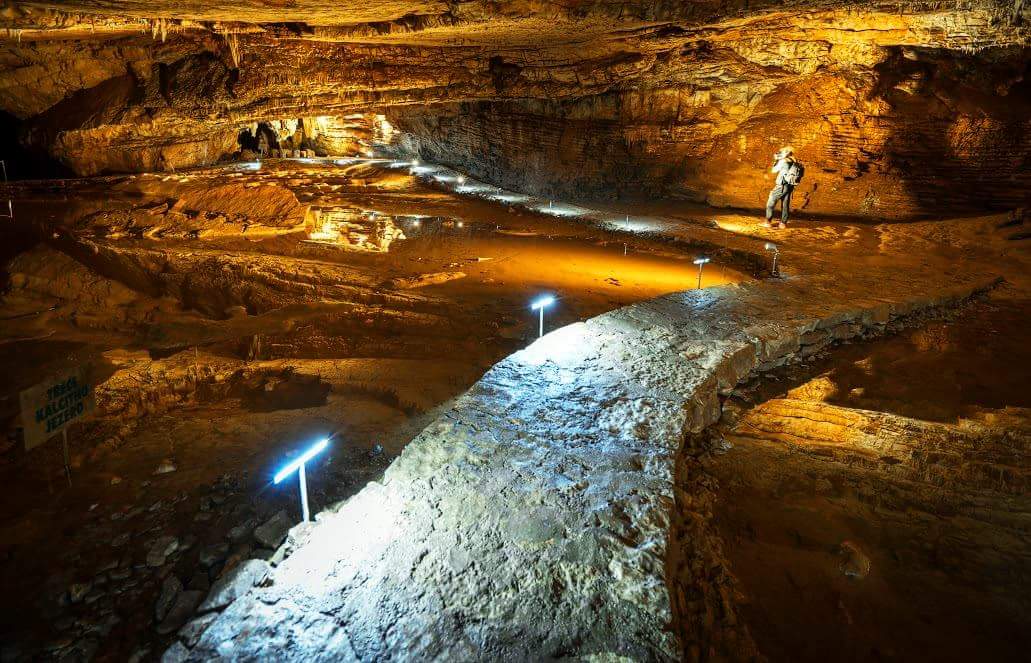Stunning beauty, spacious corridors and chambers, underground waters and waterfalls, and the wind that keeps blowing all the time make this cave rather unique on a global scale. Legend has it that fairies used to live in it. Their voices can still be heard.

The Most Beautiful Cave in B&H
Decorated with spacious corridors, chambers, waterfalls, several permanent streams and small recurrent flows with underground lakes, Vjetrenica is one of the world’s most beautiful and longest caves. It was first mentioned by Pliny the Elder in the 1st century. He described it as “an unnamed cave famous for a strong wind at its entrance” in the world’s first scientific encyclopaedia called Natural History which was completed way back in 77 AD. On the right-hand side of the entrance to the cave there are two carved stones, typical for medieval tombstones that are scattered throughout the country. Carvings depict deer hunting scenes and knights engaging in combat. Some of these drawings are estimated to be 10,000 years old. The most important archaeological discoveries found in the cave are the remains of a cave bear and a now-extinct leopard. Vjetrenica, which means “wind cave”, owes its name to a fascinating phenomenon that was observed there—a strong blast of cold air, or “wind”, which blows from its entrance. But it is not a wind that the cave produces; rather, it is a physical phenomenon. The air strongly circulates from the cave interior to the exit to counterbalance the constant, internal temperature inside the cave, with the changing temperature of the air outside.
The Most Bio-diverse Cave in the World
Vjetrenica is the most bio-diverse cave in the world. It is home to nearly 230 animal species, the best-known of which is the olm (Proteus anguinus), an endemic species also known as “čovječija ribica” (which literally translates as “human fish”, since the coluor of its skin resembles human skin). The most systematic biological research of Vjetrenica was conducted from 1912 to 1922 by a Czech scientist named Karel Absolon. A channel in which fog frequently forms was named after him (Absolon’s Channel). From 1924 to 1929, Mihajlo S. Radovanović conducted speleological research there as well, created a detailed map of the cave, and produced the first monograph on Vjetrenica Cave.

Nominated for inscription on the UNESCO List
Vjetrenica was developed for tourism purposes even before 1964. It became a protected natural monument in 1952, and it was categorised as a special geological reserve in 1965. In 2004, Vjetrenica was nominated for inscription on the UNESCO Tentative World Heritage List. If it is inscribed, it will become the first natural phenomenon in B&H on the list. In 2007, the Natural and Historic Area of the Village of Zavala and the Vjetrenica Cave was inscribed on the UNESCO Tentative World Heritage List. In 2021, the Act on Declaring the Area of the Vjetrenica Cave and a Part of the Popovo Field a Protected Landscape called “Vjetrenica-Popovo Field” was enacted. It will take a lot of time to protect this natural treasure, but the most important results were achieved as part of a comprehensive project implemented from 2017 to 2019.
Radovanovićev most—A Perfect Work of Architecture

Anyone who decides to visit the Vjetrenica Cave this summer will be able to see a gorgeous piece of architecture near this natural treasure. Radovanovićev most is a perfectly built stone bridge dating back to 60 years ago! The cave channel that runs alongside the bridge is 220 metres long and ends in a siphon Black Lake. It is located 150 metres from the place where the current tourist path ends, and anyone who decides to explore the cave is sure to love it.
From this year onwards, Outdoor Active, the largest European platform for outdoor tourism, will be featuring Herzegovina’s tourist offer. Together with the Herzegovina Bike team, you can cycle to Vjetrenica along the old narrow gauge railway trail called Ćiro which has been reconstructed into a bicycle path. The path runs from the town of Trebinje to Vjetrenica and the Zavala village, which is the final stop of this day tour. As part of the tour, you can visit the Vjetrenica Cave and the Zavala Monastery.

Railway tracks which were laid on the access path to the cave during the Austro-Hungarian Period have been protecting Vjetrenica for the past 120 years. The path they run through has been reconstructed and now there is a promenade along the cave from Crkvina. It leads to the future Information Centre where visitors will be able to buy the recently published Vjetrenica Monograph. It is a guidebook for the cave actually, featuring a wide variety of species, a number of great maps and a large number of photos.
If you want your visit to be pleasant and safe, please pay attention to the following rules:

The Vjetrenica Cave is located in the southernmost part of the country, in the Ravno Municipality. Its entrance sits 300 metres east of the centre of the village of Zavala, at the very end of the Popovo Field, at an altitude of 260 metres. It is 80 kilometres away from Mostar, and at a 12-kilometre air distance from the Adriatic Sea.
From 1 April to 1 October, you can visit the Vjetrenica Cave every day from 9 am to 7 pm. Tours around the cave last between 40 and 60 minutes. Sometimes (in extreme circumstances) the cave is closed for visitors due to high water levels (in wintertime). For the most up-to-date information, please refer to the website: www.vjetrenica.ba or to the below given contact details:
CONTACT INFO:
+387 36 891 034
+387 36 819 0361
info@vjetrenica.ba